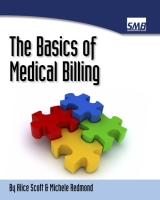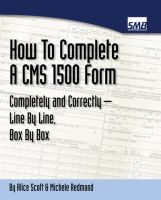What exactly is "bundling" anyway? Bundling is when an insurance carrier combines two or more CPT codes, substituting one overarching code, often ignoring modifiers along the way. Bundling can cut down on your receivables because by bundling the codes together they are only allowing the fee schedule allowance for the one code that they feel is appropriate.
There are ways to get around bundling. First you need to make sure you are billing the claim properly on the initial submission. For example, if you are billing for an E&M code for a patient who comes in with high blood pressure but the patient is also complaining of knee pain and you end up doing an aspiration of the knee joint, then you need to make sure you use the correct modifiers to indicate what you are doing. For example, you want to bill the E&M code, say it is a 99213, with a 25 modifier to indicate that it is a separate and distinct service provided during the same visit. Then you would bill for the aspiration of the knee joint with the appropriate code using a 59 modifier to indicate a distinct procedural service.
When the claim is processed and you receive the EOB (explanation of benefits statement) you need to make sure they allowed both codes separately. After all, you did an office visit to manage to high blood pressure and you did the aspiration which was completely separate from the office visit. If the insurance carrier bundles your codes you should file an appeal. In many cases the insurance carrier will reprocess the claim and unbundled the codes if you ask for an appeal.
The appeal doesn't have to be complicated. It can be a form letter that you design where you just need to fill in the blanks. A lot of carriers bundle the claims on initial processing because the majority of offices will not appeal the claim. Just think how much money they save!
You may think that it's not worth the time to appeal but you may be surprised if you knew how much money you actually lost over time. If you have a system in place to file the appeals that is a fairly simple process it won't take much time and you can increase your receivables. In my opinion, it is worth the effort.
For more information on how to increase your receivables visit my webpage on Increasing Your Receivables.
Thanks
Michele
Friday, October 5, 2007
Subscribe to:
Post Comments (Atom)




6 comments:
Michele,
I am absolutely addicted to your newsletter. I can't believe how involved insurance billing has become. Thank you for sharing your information - Keep it up - It's great.
good article. but can we tell the physician at the time of attaching codes that instead of applying these 3 cpt codes in a visit you can attach this one CPT code which will serve the purpose? i mean this is all decided by the insurance company upon certain rules they have set. and this can be only done after we have sent the claim and not befoere that. correct?
You can advise the physician that the codes will be bundled, but you usually do not want to 'bundle' the codes yourself. Usually the bundling results in lower reimbursement and doesn't always describe all of the services the provider performed. It just represents how a particular insurance carrier handles those codes. Not all carriers handle them the same, or bundle them the same, so you really should submit charges as performed.
Your blog keeps getting better and better! Your older articles are not as good as newer ones you have a lot more creativity and originality now keep it up!
In many cases the insurance carrier will reprocess the claim and unbundled the codes if you ask for an appeal. It just represents how a particular insurance carrier handles those codes.
AFTER READING YOUR COMMENTS ON BUNDLING AND UNBUNDLING, WOULD YOU PLEASES GIVE ME AN EXAMPLE OF A BUNDLE/ AND ONE THAT SHOULD BE UNBUNDLED, I AM A LITTLE CONFUSED.
THANK YOU
GLORIA
Post a Comment